UNDERWATER PHOTOGRAPHY
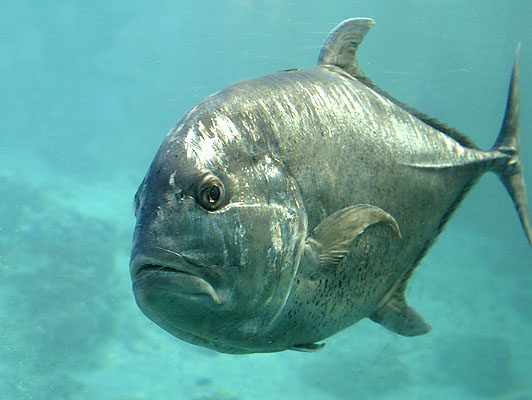
Today I got back my photos from sorkeling in Moorea (an island 12 miles west of Tahiti). The snorkeling was fun. The photos were disappointing. In fact, there isn't a single one that I want to scan and post here. There didn't seem to be much point in posting a photo and saying "Those little yellow flecks are fish." Maybe it wasn't QUITE that bad, but close.
I used one of those plastic encased "single-use" underwater cameras, good to a depth of 33 feet, and loaded with 800 speed film. The camera did what it is designed to do. The problem may have had more to do with me. I have a long, long way to go before I am the next Norbert Wu or David Doubilet.
If I am going to take photos of yellow, white, silver, black, and striped fish darting in and out of their hiding places, I will need more experience, slower fish, less motion in the ocean, and maybe better equipment. Whenever I would get lined up on a fish, another swell would roll over me and roll me over. Or the fish would dart for cover.
The camera directions said not to photograph anything closer than 4 feet. At that distance, the fish looked pretty small. I decided this camera was better suited to shooting people in a swimming pool, or much larger fish than I was encounteering (between 2 and 12 inches long).
Anything decent sized and more that four feet away looked just fine.
I don't know when I will go snorkeling again, but if I do, I will probably get the same kind of camera. Why? I don't do enough underwater photography to get a more advanced camera with closeup gear and underwater flash. But then again, I remember when I thought my above water point and shoot was everything I needed. But then I acquired my first SLR and normal lens, followed by a tripod, wide angle lens, telephoto zoom, macro lens, macro ring flash, filters . . . . .
The photo above? I was underwater, but dry in an underwater viewing station, shooting through glass. The fish is out in the South Pacific.
And if you want to see great underwater photos, go here:
http://www.norbertwu.com/
or here:
http://www.nationalgeographic.com/photography/doubilet/
CANON S70 REVIEW
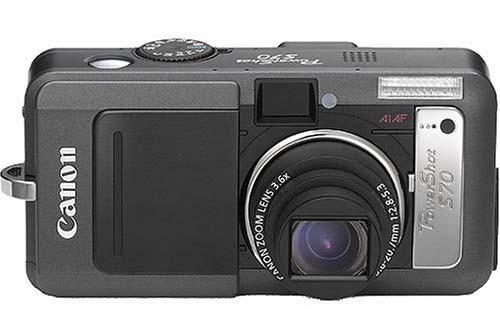
It looks like Canon has another winner with the Powership S70 digital point and shoot camera. DP Review gave it a HIGHLY RECOMMENDED rating, their highest, in a review posted earlier this week.
If you want a high quality digital camera and intend to use it mostly for landscapes and other outdoor photography, or indoors with flash, this camera is a great choice. It suffers, as do most digital point and shoots, with increased noise at higher ISO levels. Autofocus is also slower at the long end of the zoom range in low light.
The really good news is on several fronts. The zoom lens is 28-100mm (35mm equivalent). This is one of the few digital point and shoots to give you a truly wide angle focal length at the wide end of the zoom. The 7 megapixel sensor gives you excellent image quality, especially at lower ISOs. Other features are very good.
If you need a fast lens aperture for shooting inside without flash, this isn't the camera for you. You will want somethng like one of the Canon G series cameras.
You can read all about it in the full review at DP REVIEW, posted
here.
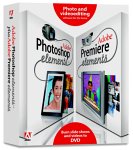 Photoshop Elements 3 and
Photoshop Elements 3 and
Adobe Premiere Elements
The best image editing software under $100 just got much better, and Adobe has released a "lite" version of their superb movie editing software, Adobe Premiere. More good news,
AMAZON and ADOBE are giving BIG rebates for purchases through November 1.
I have used Photoshop (version 5.5 and then CS) and Photoshop Elements (version 1 and then 2) for a long time. Photoshop is THE professional image editing software and is used by professionals everywhere. The one setback is the $600 price tag.
Photoshop Elements will do most of the basic imaging editing of the full scale version for 1/6 the price. Elements satisfies many of my imaging editing needs so I use it a lot when I don't need some of the more exotic features built into full version of Photoshop.
Adobe has now released Elements 3 and it is a big step forward. It adds the Healing Brush from Photoshop CS, all of the features of Adobe Albumm and best of all, Elements 3 will read RAW camera files. Now you don't have to use the slow and clunky software that came with your digital camera to read RAW files.
Photoshop Elements 3 sells for less than $95 but with current rebates from Amazon and Adobe, you can get it for $50. Use the links below.
Adobe Premiere is superb, professional-level movie editing software. Adobe has now released the lite version, Premiere Elements. Now you can edit your digital movies with style, or use all of Premiere's whiz bang features to turn still photos into movies with sound.
The Photoshop Elements 3 and Premiere Elements package costs less than $145 but for a limited time you can get rebates that drops the price to less than $85. Such a deal. More information is
here.

TAHITI
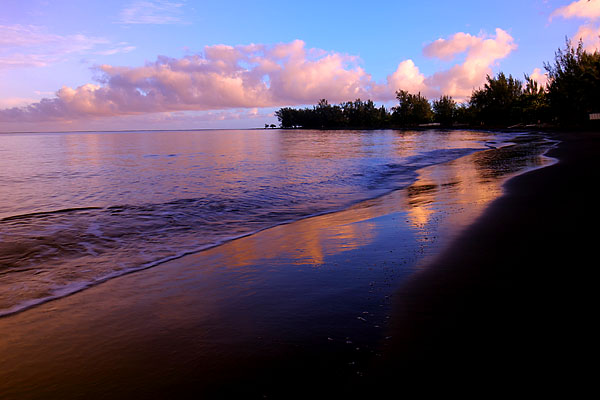 The Pacific Ocean and Point Venus, copyright (c) Jim Doty, Jr.
The Pacific Ocean and Point Venus, copyright (c) Jim Doty, Jr.
Two albums of Tahiti photos are
here.
 Pacific wave from Tahiti Nui's northeast coast, copyright (c) Jim Doty, Jr.
Pacific wave from Tahiti Nui's northeast coast, copyright (c) Jim Doty, Jr.
I will post more Tahiti albums when I get home.
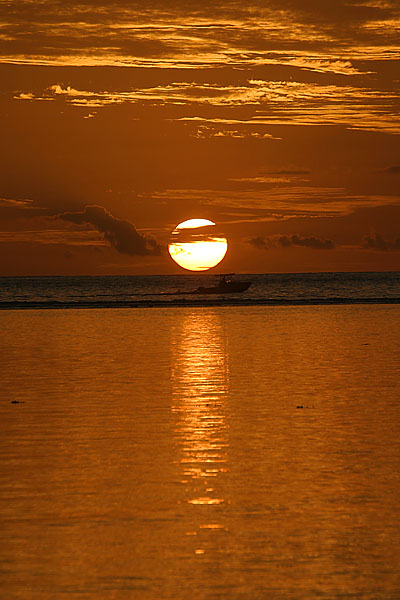 Sunset from Tahiti Nui's northwest coast, copyright (c) Jim Doty, Jr.
Sunset from Tahiti Nui's northwest coast, copyright (c) Jim Doty, Jr.